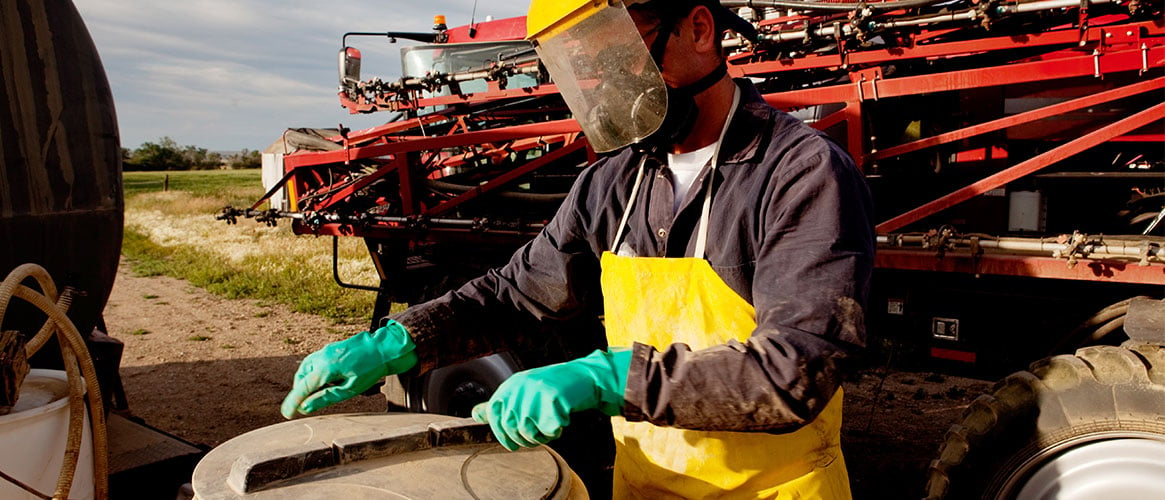Corrosives are materials so powerful that they can damage or destroy metal. In humans, they can attack and chemically destroy body tissues as soon as the chemicals touch the skin, eyes, or lungs. Although corrosives can be dangerous, they need not be harmful if they are handled, stored, and disposed of safely. Everyone who works with corrosives should be aware of their potential hazards and follow all safety precautions and recommended handling and storage procedures.
What your employees need to know about working with corrosives
Corrosive materials are present in almost any workplace either by themselves or contained in other products. Common acid corrosives include hydrochloric acid, sulfuric acid, acetic acid, and nitric acid. Common alkaline/bases include ammonium hydroxide, potassium hydroxide, and sodium hydroxide (caustic soda). Cement contains lime, which is a base or caustic compound.
Corrosives can burn and destroy body tissues on contact. The stronger or more concentrated the corrosive material is and the longer it touches the body, the worse the injuries will be. Some corrosives are toxic and can cause other health effects.
What your employees need to do when working with corrosives
Before using a material, always read the safety data sheet (SDS) to know what is in the material and to learn how to use it safely. The SDS and the label on the material’s container also include warnings for possible health effects. Always store corrosives in suitable containers and away from incompatible materials (for example: acids and bases should be stored separately). Remember to store, handle, and use corrosives in well-ventilated areas.
- Wear the proper personal protective equipment (PPE) when working with corrosive materials.
- Dispense corrosives carefully and keep containers closed when not in use.
- Stir corrosives slowly and carefully into cold water when the job requires mixing corrosives and water. (Rule to remember: AAA – Always Add Acids to water – this also applies to bases).
- Practice good housekeeping, personal cleanliness, and equipment maintenance.
- Know how to handle emergencies (spills, fires, injuries) involving corrosive materials.
- Always follow the health and safety rules that apply to you job.
If an employee should get corrosive material on them, they need to remove any contaminated clothing, rinse themselves off immediately, and seek medical attention.
What to cover at your safety meeting about working with corrosives
Review your SDSs with employees and show them where these documents are kept. When reviewing, go through and explain each step and why it’s important. In a similar manner, review the labels attached to the container of each corrosive. This includes a discussion about the information that appears on the label and how that information helps keep them safe.
Demonstrate how to handle corrosives in a safe manner.
Review the proper PPE for the job, including eye and face protection, skin and body protection, and proper ventilation.
Also review and practice your emergency procedures.
Understanding how dangerous corrosive materials can be and taking the necessary precautions allows your employees to perform their duties as required and reduce the risk of injury on the job.
(Rev. 01/2024)

